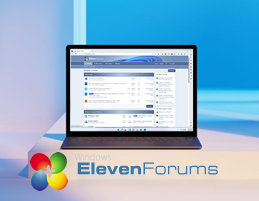kjlkjadfasdfasd
Well-known member
- Local time
- 9:43 AM
- Posts
- 26
- OS
- Windows 10 Pro
Hi,
I have a Win10 22H2 desktop that has UEFI/Secure Boot, no TPM, and an Intel Core i7-6800K CPU, which does support SSE4.2 extensions. I am trying to upgrade this to Win11 24H2. I created the 24H2 media by using UUPdump. I do have the AllowUpgradesWithUnsupportedTPMOrCPU key set. I'm trying to run the setup within the existing Win10 installation, but I get the error in the title above. I am using the "setup.exe /product server" switch, which I know bypasses the checks. I even did an ISO with Rufus explicitly picking the options to bypass the checks, but I get the exact same result.
What's even weirder is this worked fine within a VMware Workstation Windows 11 23H2 VM on this same machine! That upgrade to 24H2 was seamless. The VM has UEFI Secure Boot but no TPM (confirmed by checking tpm.msc). So it worked flawlessly on the same hardware in a VM but not on the hardware itself.
Anyone have a clue what I am doing wrong or how to get this upgraded?
Thanks
I have a Win10 22H2 desktop that has UEFI/Secure Boot, no TPM, and an Intel Core i7-6800K CPU, which does support SSE4.2 extensions. I am trying to upgrade this to Win11 24H2. I created the 24H2 media by using UUPdump. I do have the AllowUpgradesWithUnsupportedTPMOrCPU key set. I'm trying to run the setup within the existing Win10 installation, but I get the error in the title above. I am using the "setup.exe /product server" switch, which I know bypasses the checks. I even did an ISO with Rufus explicitly picking the options to bypass the checks, but I get the exact same result.
What's even weirder is this worked fine within a VMware Workstation Windows 11 23H2 VM on this same machine! That upgrade to 24H2 was seamless. The VM has UEFI Secure Boot but no TPM (confirmed by checking tpm.msc). So it worked flawlessly on the same hardware in a VM but not on the hardware itself.
Anyone have a clue what I am doing wrong or how to get this upgraded?
Thanks
My Computers
System One System Two
-
- OS
- Windows 10 Pro
- Computer type
- PC/Desktop
- Manufacturer/Model
- built myself
- CPU
- Intel Core i7 10700K
- Motherboard
- MSI Z490-A Pro
- Graphics Card(s)
- Intel UHD Graphics 630
- Antivirus
- Microsoft Defender
- Other Info
- TPM 2.0
-
- Operating System
- Windows 11 Pro
- Computer type
- PC/Desktop
- Manufacturer/Model
- built myself
- CPU
- Intel Core i7 6800K
- Motherboard
- Asus X99-E
- Graphics card(s)
- NVIDIA GeForce GTX 1050 Ti
- Antivirus
- Microsoft Defender
- Other Info
- no TPM







